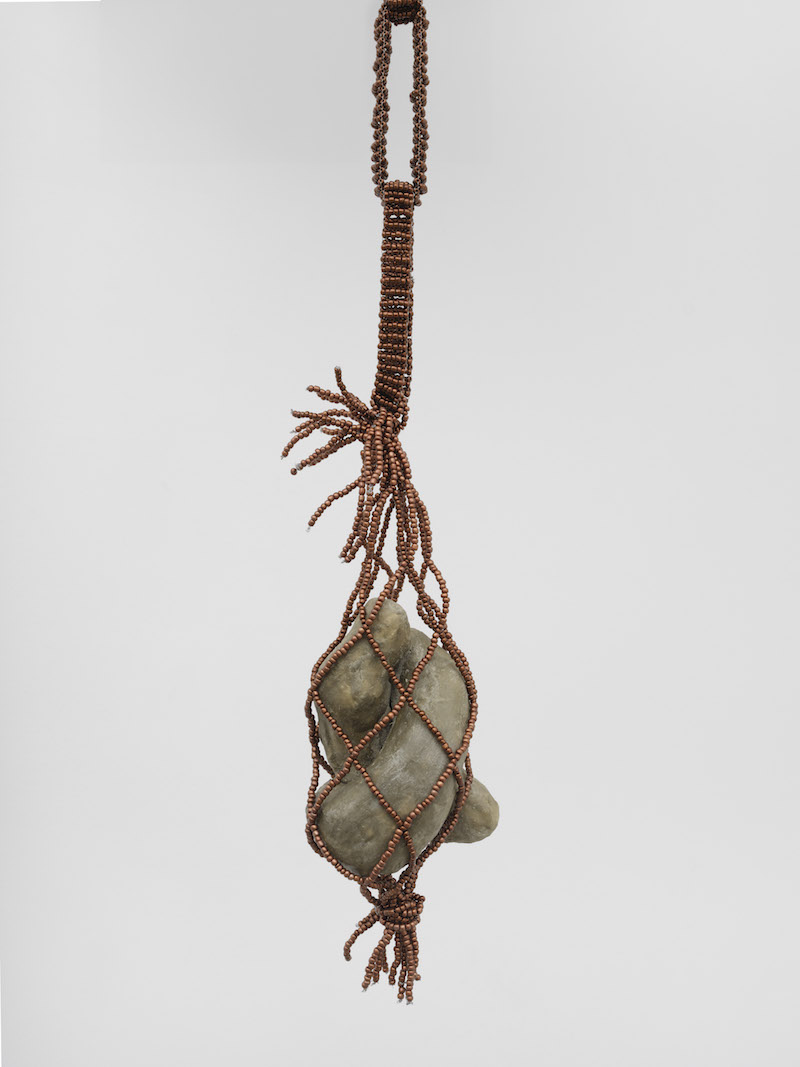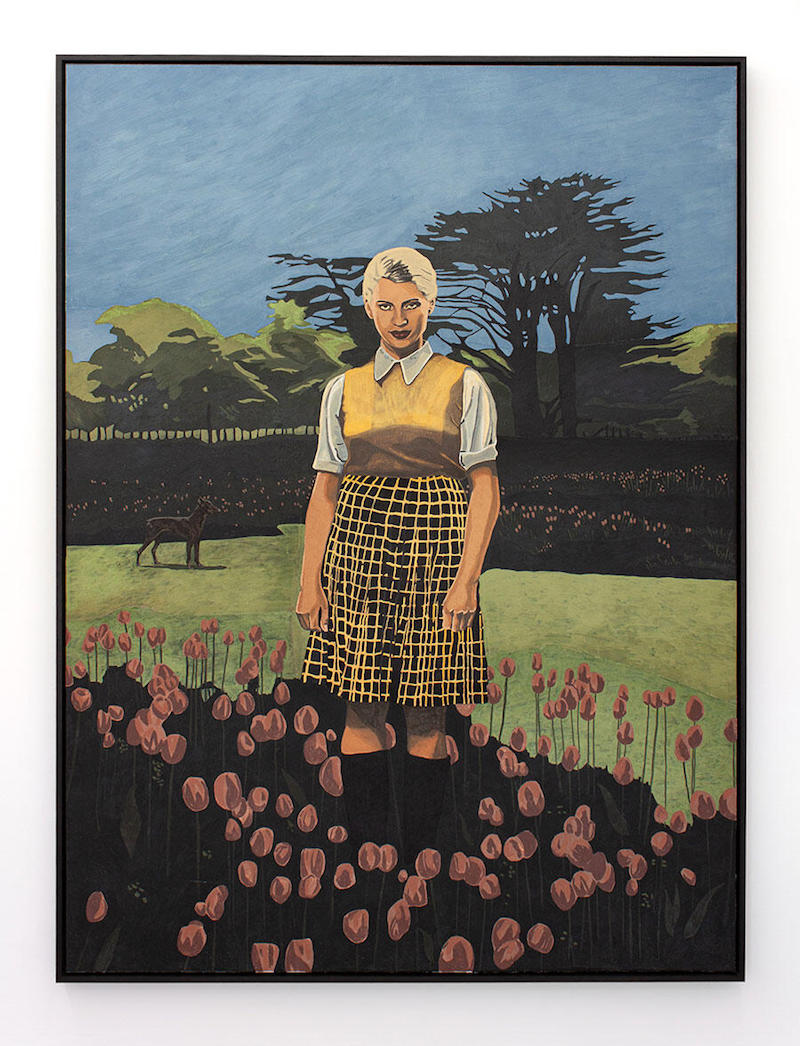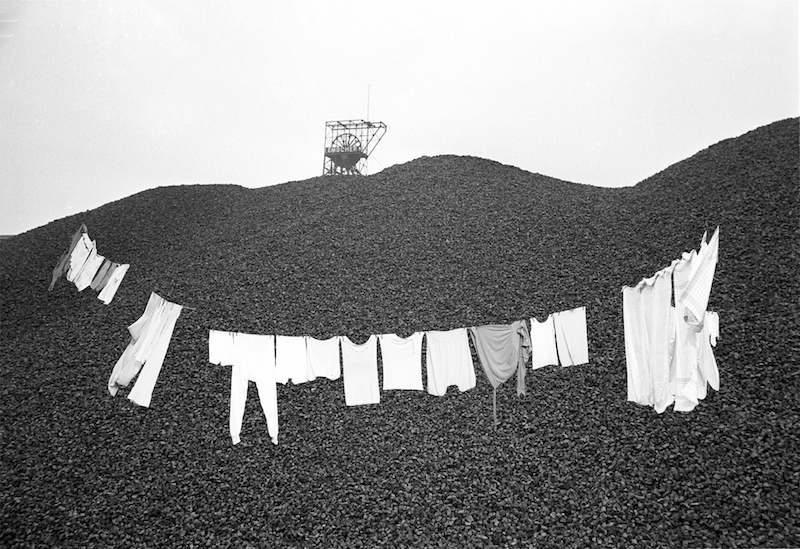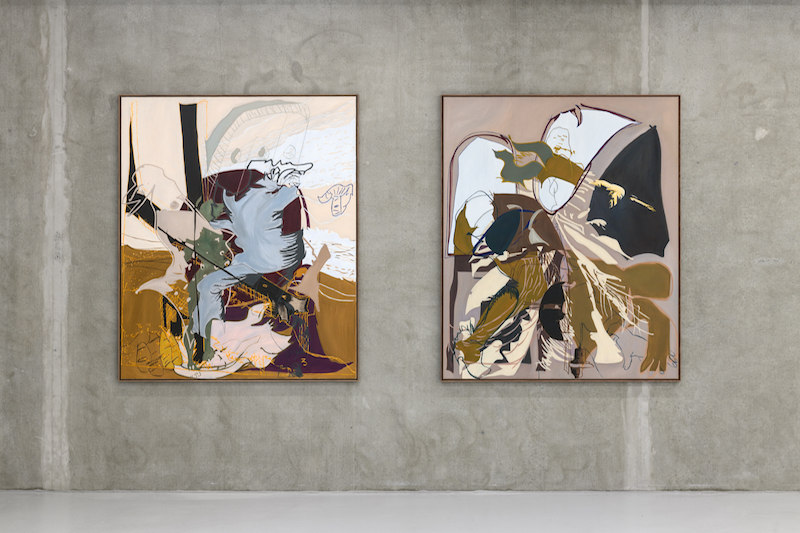by Eva Szwarc // Apr. 30, 2024
It’s an interesting spot in the city, around Tiergarten, where the art-world fabric has been gradually changing over the years. New galleries such as Ronewa Art Projects and Heidi have popped up alongside long-established ones, like Klosterfelde Edition, for which this Gallery Weekend marks its very last exhibition opening in Berlin. My plan is to head in the southerly direction of Schöneberg and to eventually snake my way up to that hive of gallery activity clustered around Potsdamer Straße. I arrive as an early-bird to ChertLüdde, still relatively calm for Friday evening.

Sofía Salazar Rosales: ‘They ask to stay (so they can hug dancing guangancó),’ 2024, glass beads, glass aggregate, plaster, vinyl glue, fiberglass, polyester resin, paraffin, concrete, tail wire; 133 × 48 × 93 cm // Photo by Marjorie Brunet Plaza, courtesy of the artist and ChertLüdde, Berlin
Sofia Salazar Rosales returns here with her second exhibition at the gallery. ‘The desire to dance with someone who is not there’ plays out in a zig-zag arrangement, which encourages you to literally dance around the works. I imagine this will be even more emphatic once the crowds gather later on in the evening. Hanging like an industrial arch, ‘While the wounds are open’ welcomes us into the space, a rusted metal that references steel sheets used in construction repair that Rosales repeatedly encountered in Paris. Here, the material folds like thick fabric over a steel bar, a paraffin-wax sandbag placed metaphorically at its feet. At first what I think is a piece of string, inviting the threat of a flame, turns out to be a line of beads—they reoccur elsewhere in the exhibition as a symbol of protection or goodwill. A playful inversion runs throughout; in ‘They ask to stay (so they can hug dancing guangancó),’ a steel beam is transformed into papery delicateness by fibreglass. A pair of concrete-cast bananas embrace, suspended from the beam in a beaded net. Our visual expectations of weight and burden are transformed. Banana boxes are brought out from the invisibility of their ubiquitousness, cast in resin and copper. One blooms oxidised blue, punctuated elsewhere by little strips of medical tape. The work presents a neat union of the processes of healing and erosion, one which breathes a symbiosis into the relationship between these static objects.

Hannah Quinlan & Rosie Hastings: ‘The Banality of Evil,’ 2024, fresco on wooden panel, 2.3 × 1.7 m // Courtesy the artists and Galerie Isabella Bortolozzi, Berlin
It’s a short cycle onwards to Bülowstraße, where Isabella Bortolozzi Gallery is showing ‘Good Society’ off-site at Eden Eden. Hannah Quinlan and Rosie Hastings’ exhibition of paintings, sculptures and a video work is searingly prescient; the paintings are particularly confronting. In ‘The Banality of Evil’ (2024), a woman stands in the centre of the canvas, knee-deep in tulips. A strip of pure blue sky lies above and a deer grazes in the distance behind her. Isn’t it all so very picturesque? If not for the black pools, from which the flowers spring or the subject’s challenging gaze. Fellow paintings are peppered with direct imagery associated with the Holocaust—impossibly tall, black chimneys loom in the background, rows of huts stretch out in unending lines. Women stand like models, their poses pushed to the point of ill-ease. Elsewhere in the shadows, authority figures lurk. Downstairs, the video work brings together the strange, personal and violent history that existed in a peculiar contradiction under the Weimar Republic, in which Hasting’s own family past is rooted. The work feels especially charged, given the German government’s current position on the war on Palestine and the tensions now being experienced between state control and civilian protest. The work, the artists’ themselves acknowledge, would not be accepted in many spaces. How important it is, I feel, that it should be.

Pınar Öğrenci: ‘Glück auf in Deutschland,’ 2024, fine art print collage made of archival material from the Digital Photography Archive Ruhr Museum Essen // Courtesy the artist and Galerie Tanja Wagner, Berlin
At Tanja Wagner, Pınar Öğrenci packs another punch with her exhibition ‘Glück auf in Deutschland.’ At the centre is a film, which locates mining in Germany—historically seen as “a very white German story”—within the wider context and contribution of migrant miner workers. The film is equal parts individual and documented history, poetic and investigative, with stories intersecting in German, Turkish and English. In the film’s most poignant turn, a Turkish widow talks of her husband’s death after a mine collapsed on him: “his head opened like a watermelon,” she tells us. The death was recorded as a cardiac arrest, so the mining company would never need to pay his compensation. Öğrenci brings to light these shadowed stories that are removed from the photographic archives the artist explored, alongside contemporary accounts of migrant workers today. As I leave, I see the artist herself is speaking to a wide circle of people outside the space; I manage to catch her final words, telling us the work carries relevance to today’s migrant politics in Germany.

Lisa Jo: ‘Trouble Every Day,’ 2024, installation view // Photo by Julian Blum and courtesy Galerie Molitor
Now down to the last half hour of the evening, the galleries are in full swing. At my final stop at Galerie Molitor, my route is negotiated by whatever standing room is left available. In ‘Trouble Every Day,’ Lisa Jo’s paintings deliberately resist stasis and can be read both backwards and forwards, as unfinished endings or unfurling beginnings. The earthy palettes are zesty and, though dotted with the odd geometric shape or divisive line, the paintings are mostly an interaction of organic, leafy shapes. They are beautifully installed in the concrete space and, given a quieter day, are landscapes one could easily drift away into. As we’re ushered back out to the streets, the galleries close and we are left with what we’ve absorbed. Though art should never be burdened to tell certain stories, a quick run around this small corner of the city shows what a world of stories are waiting to be shared.
ChertLüdde
Sofia Salazar Rosales: ‘The desire to dance with someone who is not here’
Exhibition: Apr. 26–June 22, 2024
chertluedde.com
Hauptstraße 18, 10827 Berlin, click here for map
Galerie Isabella Bortolozzi
Hannah Quinlan & Rosie Hastings: ‘Good Society’
Exhibition: Apr. 26–June 30, 2024
bortolozzi.com
Eden Eden, Bülowstraße 74, 10783 Berlin, click here for map
Galerie Tanja Wagner
Pınar Öğrenci: ‘Glück auf in Deutschland’
Exhibition: Apr. 26–June 8, 2024
tanjawagner.com
Pohlstraße 64, 10785 Berlin, click here for map
Galerie Molitor
Lisa Jo: ‘Trouble Every Day’
Exhibition: Apr. 26–May 30, 2024
galeriemolitor.com
Kurfürstenstraße 143, 10785 Berlin, click here for map






















